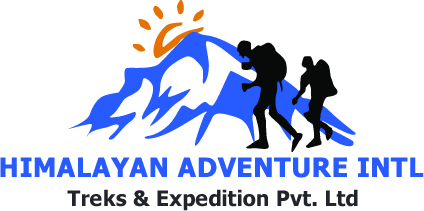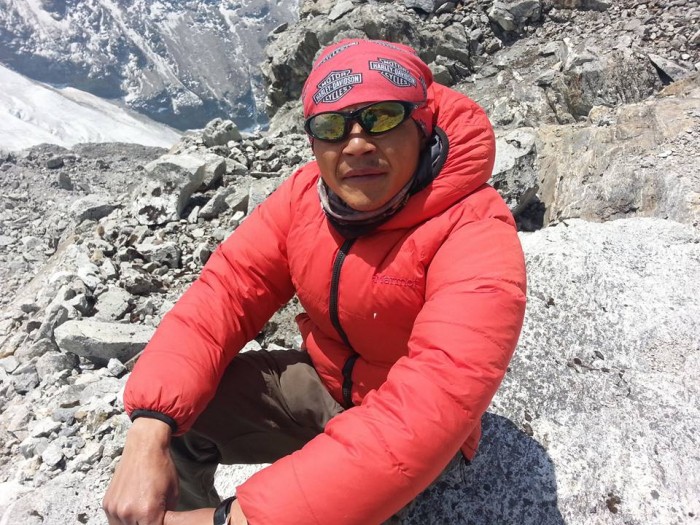The Annapurna Circuit Trek is one of Nepal’s most iconic trekking experiences, offering a perfect blend of cultural richness, natural beauty, and thrilling high-altitude adventure. Whether you’re a beginner seeking your first Himalayan challenge or a seasoned trekker exploring new routes, the Annapurna Circuit offers something for everyone. With panoramic views of Annapurna and Dhaulagiri ranges, deep gorges, Tibetan-style villages, high passes, and the spectacular Tilicho Lake, this trek remains a favorite in 2025 and will continue to be among the best Annapurna treks in 2026.
Where is the Annapurna Circuit Trek?
The Annapurna Circuit Trek lies in the Annapurna region of central Nepal, forming a loop around the Annapurna Massif. The trail stretches across multiple districts including Lamjung, Manang, Mustang, and Myagdi. The journey typically begins in Besisahar and ends in Pokhara, making the Annapurna Circuit Trek from Pokhara a popular and accessible route.
Why Trek the Annapurna Circuit in 2025 and 2026?
-
Scenic diversity: From subtropical forests and rice paddies to alpine meadows and arid cliffs.
-
Tilicho Lake: One of the highest lakes in the world (4,919 m) is a rewarding detour.
-
Thorong La Pass (5,416m): The highest point of the trek with jaw-dropping Himalayan vistas.
-
Cultural immersion: Encounter Gurung, Thakali, and Tibetan-influenced communities.
-
Updated infrastructure: More lodges, safer trails, better road connectivity.
-
Popularity: It's gaining more attention post-pandemic, even rivaling the Everest Base Camp trail.
Annapurna Circuit Trek 12 Days Itinerary
Perfect for trekkers with limited time but good fitness levels. This itinerary includes the classic circuit route minus side trips.
Day-by-Day Breakdown:
-
Drive to Besisahar then to Chame
-
Trek to Pisang
-
Trek to Manang
-
Acclimatization Day in Manang
-
Trek to Yak Kharka
-
Trek to Thorong Phedi
-
Cross Thorong La Pass – Trek to Muktinath
-
Drive to Tatopani (via Jomsom)
-
Trek to Ghorepani
-
Hike Poon Hill – Trek to Tadapani
-
Trek to Ghandruk – Drive to Pokhara
-
Return to Kathmandu
Annapurna Circuit Trek with Tilicho Lake Itinerary – 14 Days
Ideal for adventure lovers wanting to see Tilicho Lake, a surreal high-altitude lake nestled amidst towering mountains.
Day-by-Day Breakdown:
-
Drive to Chame
-
Trek to Pisang
-
Trek to Manang
-
Acclimatization in Manang
-
Trek to Siri Kharka
-
Trek to Tilicho Base Camp
-
Visit Tilicho Lake and return to Siri Kharka
-
Trek to Yak Kharka
-
Trek to Thorong Phedi
-
Cross Thorong La – Trek to Muktinath
-
Drive to Tatopani
-
Trek to Ghorepani
-
Poon Hill Sunrise – Trek to Ghandruk
-
Drive to Pokhara
Annapurna Circuit Trek Itinerary 10 Days
Great for fit hikers or return trekkers who want to complete the core circuit trail.
Summary:
-
Skip side trips and take private jeep rides to start/end points.
-
Focus is on Chame to Muktinath, including Thorong La.
Annapurna Trek Itinerary Variations
Besides the full circuit, trekkers often combine sections with the Annapurna Base Camp trek. For those short on time, shorter treks like Ghorepani-Poon Hill or Mardi Himal are among the best Annapurna treks alternatives.
Annapurna Circuit Trek Map & Route
The trek forms a semi-circle around the Annapurna Range. The route begins in the lush valleys of Besisahar and ascends to the arid trans-Himalayan terrain of Manang and Mustang.
Annapurna Circuit Trek Route Map Highlights:
-
Chame → Pisang → Manang → Yak Kharka → Thorong Phedi → Thorong La → Muktinath → Jomsom
-
Optional Side Trips: Tilicho Lake, Ice Lake, Gangapurna Lake
-
Exit Points: Tatopani or Nayapul (via Ghorepani)
Maps are available through trekking agencies or downloadable GPX apps. Himalayan Adventure International Treks provides a free Annapurna Circuit trek map for all clients.
Annapurna Circuit Trek Cost
Here’s a breakdown of Annapurna Circuit Trek price for 2025/2026:
Group Join Cost (Per Person)
-
12-day trek: USD 950–1,100
-
14-day trek with Tilicho Lake: USD 1,200–1,400
Solo Trekker Cost
-
Higher due to logistics: USD 1,200–1,500
-
Private guide and porter included
Couple Cost
Hiring a Guide and Porter – Annapurna Trek Cost
Inclusions:
-
Transportation (Kathmandu–Besisahar–Chame / Pokhara return)
-
Meals and accommodation during trek
-
Permits: ACAP & TIMS (approx. USD 40)
-
Guide/Porter wages and insurance
Exclusions:
-
Personal insurance
-
Alcohol, snacks, tips
-
Trekking gear rental
How Much Does the Annapurna Circuit Trek Cost?
Depending on the itinerary, season, and services:
-
Budget (independent): USD 700–900
-
Mid-range (guided): USD 950–1,200
-
Luxury (private jeep, hotels): USD 1,500+
How Much is Travel Insurance for Annapurna Circuit Trek?
Expect to pay USD 100–150 for a 30-day trekking insurance policy that covers:
Recommended providers: World Nomads, IMG, or SafetyWing. Ensure your policy covers Thorong La Pass at 5,416m.
Annapurna Trek Difficulty – Can a Beginner Do It?
How Difficult is the Annapurna Trek?
Moderate to challenging. While no technical climbing is involved, altitude and daily walks of 5–7 hours can be demanding.
Can a Beginner Climb Annapurna?
Yes, but only with:
Many beginners successfully complete the Annapurna Circuit under expert guidance.
Best Time to Hike Annapurna Circuit:
-
Spring (March–May):
-
Autumn (Sept–Nov):
Avoid:
-
Summer/Monsoon (June–Aug): Muddy trails, landslides
-
Winter (Dec–Feb): Cold, Thorong La may be blocked by snow
Is Annapurna Circuit a Good Trekking Trail in 2025 & 2026?
Absolutely! With improved infrastructure, scenic value, and cultural diversity, the Annapurna Circuit remains one of the best treks in Nepal. The addition of side routes like Tilicho Lake and Ice Lake only enhances its appeal.
Annapurna Circuit vs Everest Base Camp – Which is More Popular?
While Everest Base Camp offers the allure of the world’s tallest mountain, many trekkers prefer the Annapurna Circuit due to:
-
Greater terrain and ecosystem diversity
-
Circular route (not a repeat trail)
-
Less altitude-related risks
-
Cheaper logistics
In 2025 & 2026, the Annapurna Circuit is rising in popularity, especially among eco-trekkers and cultural adventurers.
Which Annapurna Trek is Best?
For high adventure, epic views, and cultural richness, the Annapurna Circuit Trek with Tilicho Lake itinerary is unbeatable.
If you’re looking for:
-
Shorter trek: Try Annapurna Base Camp or Ghorepani-Poon Hill
-
Off-the-beaten path: Tilicho Lake or Nar Phu Valley
-
Classic experience: The full 14-day Annapurna Circuit itinerary
Why Book with Himalayan Adventure International Treks?
We specialize in creating personalized, safe, and budget-friendly trekking experiences. All our Annapurna Circuit treks include:
-
Expert local guides
-
Porter services
-
Tailored itineraries (solo, couple, group)
-
24/7 support from Kathmandu to Pokhara
-
Free Annapurna trek maps and permits management
Whether you're a solo traveler or a group looking to join a scheduled departure, we ensure a hassle-free journey through Nepal’s most scenic region.
Contact us today to join a 2025 or 2026 Annapurna Circuit trek. Let's plan your Himalayan adventure together!

 Plan Your Trip Now
Plan Your Trip Now 










